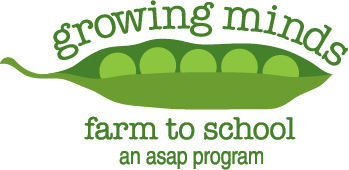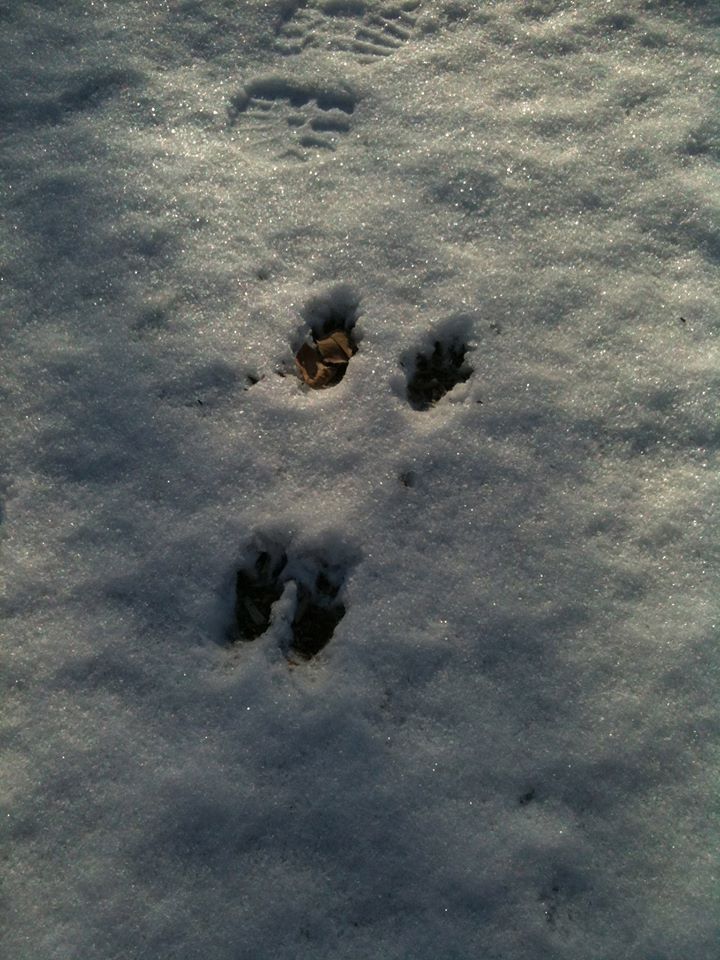This week’s theme is winter. Our “Growing Minds Day by Day” educational resource lists are designed for families and educators to use during COVID-19 and beyond.
Growing Minds Day by Day
Week of December 21, 2020 – Winter
December 21st is the Winter Solstice and the first day of winter. Winter Solstice has been celebrated all over the world for thousands of years. In the Northern Hemisphere, it occurs annually on December 21 or 22 (it occurs in June in the Southern Hemisphere). Winter Solstice marks the point when one of the Earth’s poles (the North Pole in the Northern Hemisphere) is at its maximum tilt away from the sun. Thus, the Solstice marks the shortest day and longest night of the year. It also promises the return of the sun after an extended period of darkness, as the Earth begins to tilt back towards the sun. The significance of the Winter Solstice has been celebrated by people around the world for thousands of years.
Books for Monday, 12/21
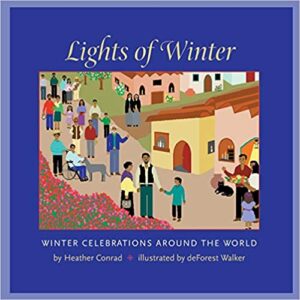 Lights of Winter: Winter Celebrations around the World
Lights of Winter: Winter Celebrations around the World
by Heather Conrad
Lights of Winter is a children’s picture book about winter celebrations around the world: Solstice, Yule, Christmas, Kwanzaa, Hanukkah, Teng Chieh, Diwali, Soyal, Las Posadas, Zagmuk, Saturnalia. For ages 3-9. Watch a read aloud on YouTube.
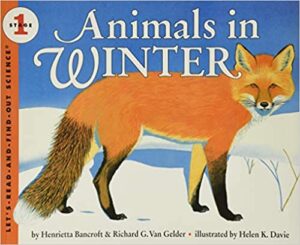 Animals in the Winter
Animals in the Winter
by Henrietta Bancroft & Richard G. Van Gelder
Have you ever seen a butterfly in the snow? Probably not. Butterflies can’t survive cold weather, so when winter comes, many butterflies fly to warmer places. They migrate. Woodchucks don’t like cold weather either but they don’t migrate; they hibernate. Woodchucks sleep in their dens all winter long. Read and find out how other animals cope with winter’s worst weather. This nonfiction picture book is an excellent choice to share with children ages 4 to 6. Watch a read aloud on YouTube.
Find more books
Visit the Growing Minds’ farm to school literature database to discover more of our favorite children’s books. Use the search bar to explore more of our favorite stories.
Local Food Recipe for Tuesday, 12/22
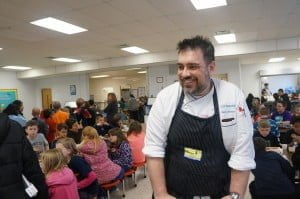 Most of the ingredients in this recipe can still be found at your local farmers market in December! Apples, winter squash, onions, garlic, and carrots are cold-hardy fruits and vegetables that can be stored throughout the winter months. A warming bowl of soup will make a great meal on one of the longest nights of the year. Kids can… help wash, peel, and chop the veggies using a kid-safe knife, measure the stock, and stir the soup as it simmers.
Most of the ingredients in this recipe can still be found at your local farmers market in December! Apples, winter squash, onions, garlic, and carrots are cold-hardy fruits and vegetables that can be stored throughout the winter months. A warming bowl of soup will make a great meal on one of the longest nights of the year. Kids can… help wash, peel, and chop the veggies using a kid-safe knife, measure the stock, and stir the soup as it simmers.
Biltmore’s Apple and Butternut Squash Soup
by Chef Mark DeMarco (pictured right)
Ingredients:
- 3 local apples, cored, peeled, and sliced
- 1 medium local butternut squash
- 1 medium yellow onion, chopped
- 1 large carrot, peeled and chopped
- 1 Tbsp. minced garlic
- 4 cups vegetable stock
- Salt and pepper to taste
- Optional: 1/4 tsp ground nutmeg; 1/2 tsp ground cinnamon; dash hot sauce; splash of cream
Directions:
- Cut squash in half and remove seeds and pulp. Roast in a 350-degree oven flesh side down until tender, about 45 minutes.
- Remove squash from the oven and cool. After cooled, remove all meat and discard skin.
- Put carrots, celery, onions, and apple slices on a baking sheet. Brush with oil and roast until soft.
- While vegetables are roasting, bring stock to a simmer in a heavy-bottomed pot and then add all roasted vegetables and spices and simmer for 30 additional minutes.
- Cool and puree in a blender.
For more seasonal recipe inspiration, see what’s fresh at your local Appalachian Grown farmers market!
Educational Resources for Wednesday, 12/23
- Growing Minds December Resources: Apple-themed lesson plans, books, and local food recipes, plus our This Week in the Garden December activity guides.
- Growing Minds Bird & Tree Bingo: Winter is a wonderful time for backyard bird watching, and the season offers a different perspective on both deciduous and evergreen trees.
- What’s going on with our Western North Carolina wildlife in the winter? Find out here (and make an easy hibernation craft), courtesy of The North Carolina Arboretum.
- To learn more about 2020’s Winter Solstice, check out the Farmers’ Almanac here.
Activities for Thursday, 12/24
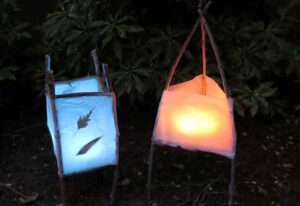 Winter Solstice Lanterns
Winter Solstice Lanterns
As Winter Solstice occurs on the darkest day of the year, it’s often celebrated with festivals of light. Find out how you can make your own festive Winter Solstice Lanterns here using simple found materials like twigs and leaves, plus tissue paper, cardboard, glue, and flameless tealight candles. Photo credit: eHow.
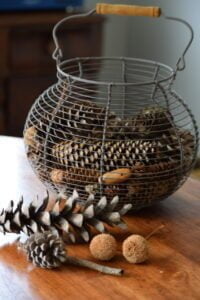 Winter Treasures
Winter Treasures
Children can find many treasures to explore in their yards and neighborhoods in winter months. Take your children outside to explore the winter scenery and foliage and see what piques their interest and curiosity. Give each child a bag or basket and encourage them to fill it up with treasures. Look for fallen leaves, pine cones, acorns, berries, or twigs and help your children gather them. Take them back inside and make a centerpiece or porch decoration with the different items. For extra color, add ornaments or ribbons to the centerpieces, or help your children paint the pine cones. Return the natural materials that you don’t use back to the yard.
Frost Walk
Early Winter is a fun time to explore changing weather patterns, cooling temperatures, and the effects of frost on the plants around us. Frost brings big changes in the yard and garden. Frost happens in the very early morning and soon melts, and the moisture is dried by the sun. Frost damages plants because the water inside the cells of a plant freezes and breaks the cells’ walls. As a result, the frozen parts of the plant die. Here’s a simple definition of frost that you can share with your child: Liquid (water) becomes solid (ice) when the temperature reaches the freezing point, or 32ºF (0ºC). When the temperature falls below freezing, the moisture in the air freezes into ice crystals and they settle on grass and plants. This is frost.
To explore frost, go on a frost walk with your child first thing in the morning. How many plants can they find covered in frost? Is everything covered in frost or only some plants and objects? To continue the exploration of frost, make frost at home. 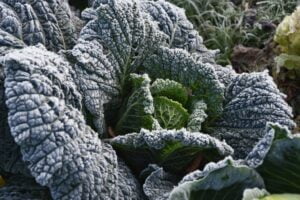
What you need:
- A clean and empty tin can with the label peeled off
- Crushed ice
- Water
- Salt
Directions:
- Fill a tin can about half full with ice and add some salt and water.
- Wait and watch frost form on the outside of the can.
Freaky Friday, 12/25: Popcorn
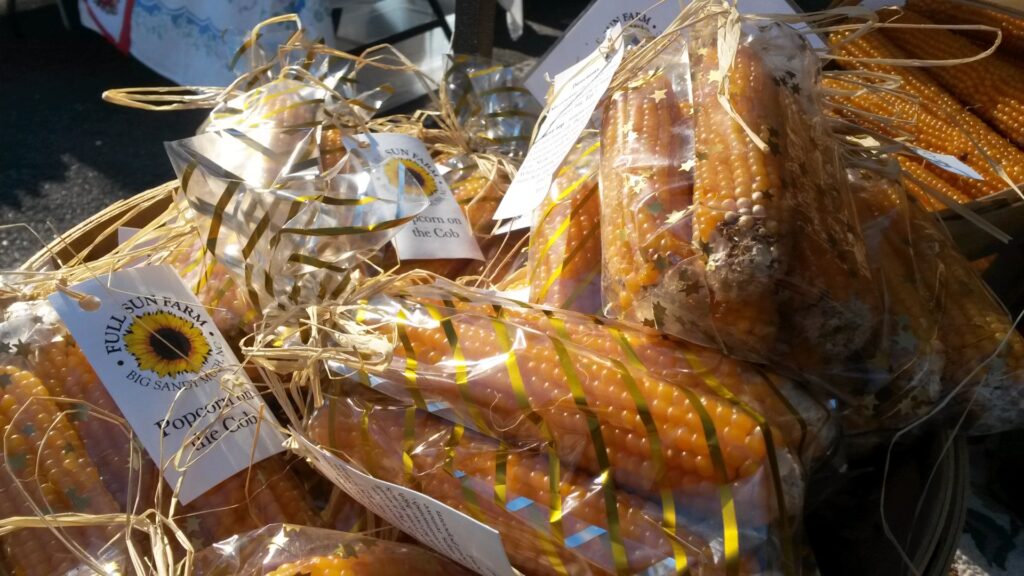
Popcorn has a rich history, is fun to cook, and is available locally at many farmers markets in December, which makes it a perfect theme for lessons in all subjects this season. Popcorn is easy to make and clean up, not to mention healthy and tasty. Kids love to estimate how many kernels are on a cob of popcorn, and popping popcorn can be a great science experiment. Popcorn can also be used to explore Native American cultures, as many indigenous Americans have been popping corn for thousands of years.
- Fill a jar with popcorn kernels. Ask kids to estimate how many kernels are in the jar, and have them write down their estimates. Kids can count kernels by twos, fives or tens.
- Pop some popcorn! First, ask kids to estimate how many of the kernels will pop. Then count at the end to see how close their guesses were. Serve and enjoy.
- A twist on seed collages. Popcorn kernels are actually just seeds. Cut out corn husks from green construction paper and glue kernels on to make a seed collage.
- Write a poem about popping popcorn. Include sounds you hear when popcorn is popping. What sound means it is done popping?
- Thread popcorn onto a string to make a decorative winter garland. Hang the garland on an outdoor tree or shrub to attract birds and squirrels to the yard.
—
That’s it for this week. Click here to access Day by Day resources from past weeks. If you didn’t find what you’re looking for here, please visit our Lesson Plans page.
